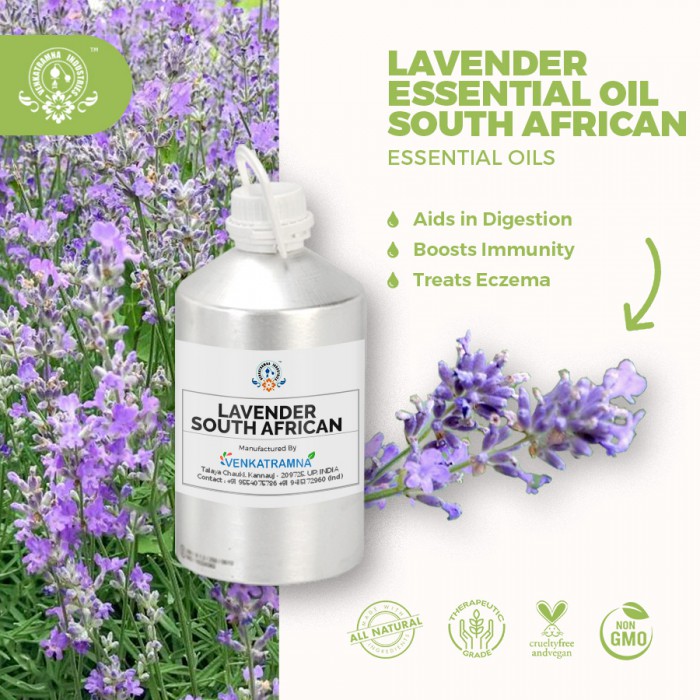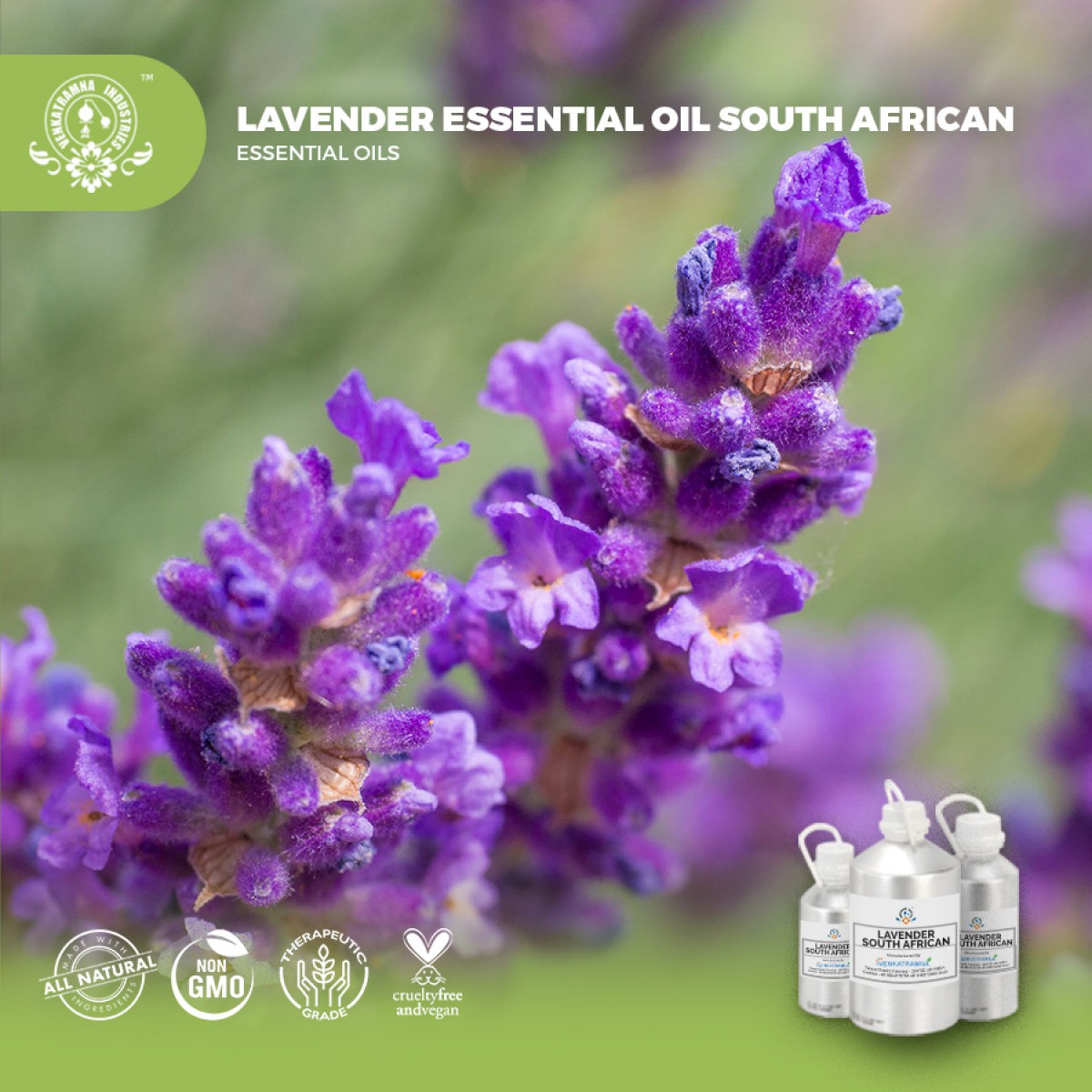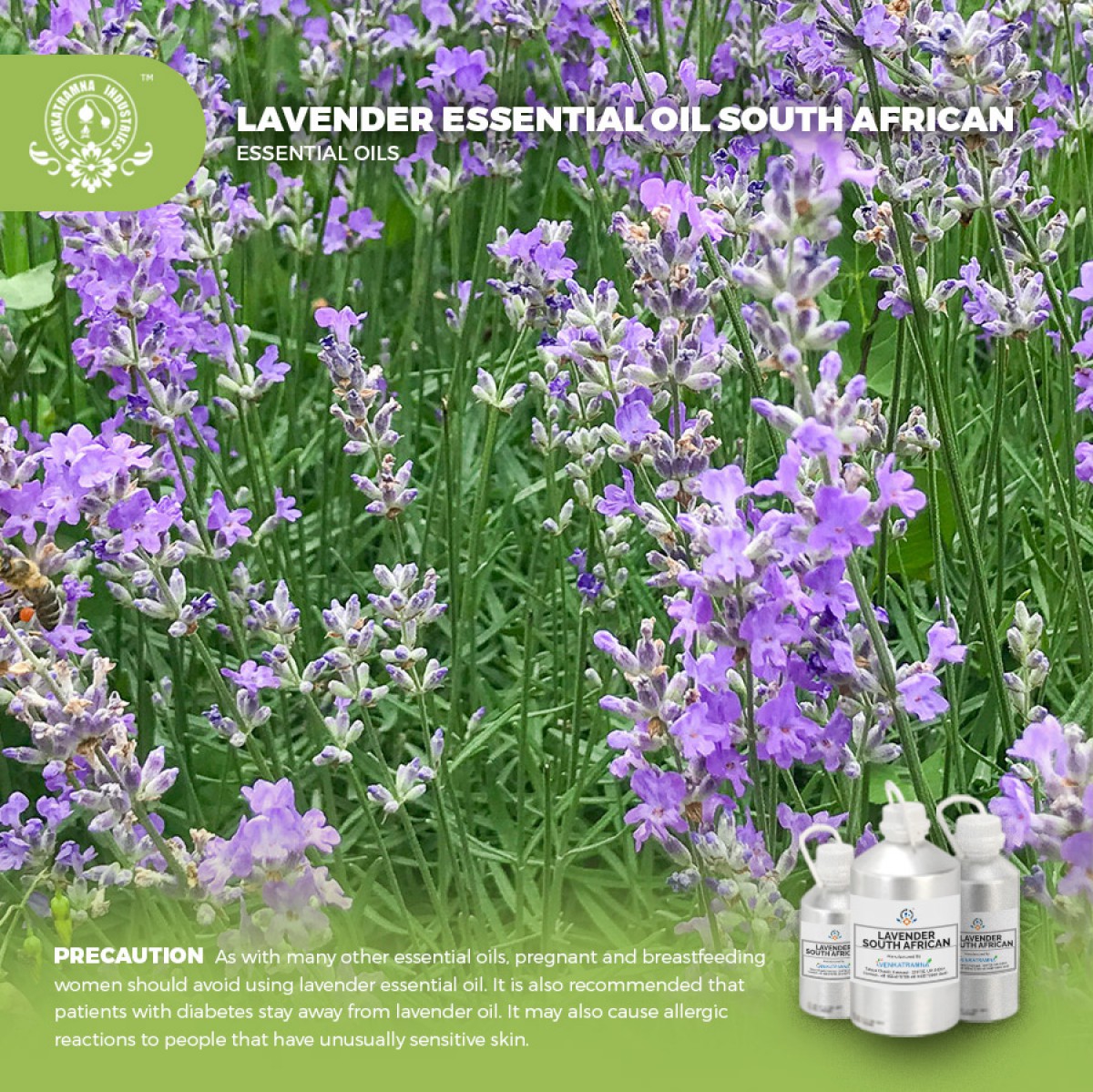Botanical Name: Lavandula angustifolia Common name: South African Lavander, Cape Laven Read More
|
Botanical Name: |
Lavandula angustifolia |
|
Common name: |
South African Lavander, Cape Lavender |
|
Plant family: |
Lamiaceae |
|
Genus: |
Lavandula |
|
Appearance/Color: |
A thin, clear,
pale yellow liquid. |
|
Odor: |
A top note of strong
aroma, Lavender Population has a rich floral scent that is somewhat fruitier,
mellower and less camphoraceous than Lavender 40/42, and it smells more like
fresh lavender. |
|
Blends With: |
Bay, Bergamot,
Chamomile, Citronella, Clary Sage, Geranium, Jasmine, Lemon, Mandarin,
Orange, Palmarosa, Patchouli, Pine, Thyme, Rosemary, Rosewood and
Ylang-Ylang. |
|
Origin: |
South Africa |
|
Source: |
Flower |
|
Method of
Extraction: |
Steam Distillation |
Spike Lavender, and with a high
percentage of 1,8- Cineole and Camphor, this species of Lavender stands out
amongst the rest. These constituents are often likened to oils such as
Eucalyptus, Peppermint, and Ravintsara, and have similar benefits, such as
helping to relieve coughs, clear congestion, and promote easy breathing. With
its high percentage of Linalool, Spike Lavender is also frequently used for its
stress relieving, pain reducing, headache helping, and anti-inflammatory
properties. The aroma of Spike Lavender is a combination of both traditional
Lavender, and the sharp, medicinal, camphoraceous aroma of Eucalyptus.
The term “Aromatherapie,” or
Aromatherapy in English was created by French chemist, René-Maurice Gattefossé,
in the early 1900s. Gattefossé became the poster child of Lavender essential
oil. His name and famous incident are well known amongst aromatherapists. One day,
while Gattefossé was working in his lab, his hand was badly burned by an
explosion that occurred. Gattefossé was able to successfully treat the gangrene
that resulted from the burn with Lavender essential oil. Following this event,
Lavender essential oil has been researched and studied a multitudinous amount
of times.
Lavender oil is extracted mostly from the flowers of the lavender plant, primarily through steam distillation.
DISCLAIMER
The complete range of conditions
or methods of use are beyond our control therefore we do not assume any
responsibility and expressly disclaim any liability for any use of this
product. Information contained herein is believed to be true and accurate however,
all statements or suggestions are made without warranty, expressed or implied,
regarding accuracy of the information, the hazards connected with the use of
the material or the results to be obtained from the use thereof. Compliance
with all applicable federal, state, and local laws and local regulations
remains the responsibility of the user.
The FDA has not evaluated the
statements on this website. No claims are made by Venkatramna Industries as to
the medicinal value of any products from vriaroma.com or by us. The information
presented here is for educating our customers about the traditional uses of
essential oils and is not intended to diagnose, treat, cure, or prevent any
disease. You are responsible for understanding the safe application of these products.
If you have any questions, please call or email us for further information.
As per NAHA guidelines, New Directions Aromatics
(NDA) does not recommend the ingestion of essential oils. It is imperative to
consult a medical practitioner before using Essential Oils for therapeutic
purposes. Pregnant and nursing women and those taking prescription drugs are
especially advised not to use this product without the medical advice of a
physician. The oil should always be stored in an area that is inaccessible to
children, especially those under the age of 7.
The flowers of lavender are
fragrant in nature and have been used for making potpourri for centuries.
Traditionally, lavender essential oil has also been used in making perfumes.
It
is an analgesic reduce pain and inflammation. Whether it’s pain in the muscles
or joints, toothache, headache, coughs, colds or fevers, Lavandin Oil
provides natural pain relief for your ailments. It
has rich antiseptic properties that can treat wounds.
Its
intoxicating aroma can effectively boost self-esteem, confidence, hope and
mental strength, working together to combat symptoms of depression.
COMMON
USAGE
·
Bug Repellent
·
Induces Sleep
·
Relieves Stress & Anxiety
·
Treats Acne
·
Relieves Pain
·
Stimulates Urine Flow
·
Treats Respiratory Disorders
·
Hair Care
·
Prevents Cancer
·
Improves Blood Circulation
·
Aids in Digestion
·
Boosts Immunity
·
Treats Eczema
Ingredients:
|
S.No |
Key Constituents |
Strength (%) |
|
1 |
Linalool |
39.1% (25–38%) |
|
2 |
Linalyl acetate |
36.2% (25–45%) |
|
3 |
(Z)-?-Ocimene |
4.3% (3–9%) |
|
4 |
Terpinen-4-ol |
3.0% (1.5–6%) |
|
5 |
3-Octanone |
2.9% (2–5%) |
|
6 |
?-Caryophyllene |
2.6% |
|
7 |
Lavandulyl acetate |
2.5% (>1.0%) |
Quality: Spike lavender
oil may be adulterated with Spanish sage oil, eucalyptus oil, lavandin oil, and
fractions of these and other cheap oils.
Safety summary
·
Hazards: May be mildly neurotoxic, based
on camphor content.
·
Contraindications: None known.
·
Maximum daily oral dose 603 mg
·
Maximum dermal use level 19%
Safety advice: Oral and
dermal restrictions are based on 23.2% camphor content with camphor limits of
2.0 mg/kg/day and 4.5%.
Regulatory guidelines: Has
GRAS status. According to IFRA, essential oils rich in linalool should only be
used when the level of peroxides is kept to the lowest practical value. The
addition of antioxidants such as 0.1% BHT or a-tocopherol at the time of
production is recommended.
Organ-specific effects
·
Adverse skin reactions: Undiluted spike
lavender oil was moderately irritating to rabbits; tested at 8% on 25
volunteers it was neither irritating nor sensitizing. In a study of 200
consecutive dermatitis patients, one (0.5%) was sensitive to 2% spike lavender
oil on patch testing. Oxidation products of linalool may be skin sensitizing,
but 1,8-cineole has antioxidant properties.
·
Reproductive toxicity: The low
reproductive toxicity of linalool, 1,8-cineole and camphor suggests that spike
lavender oil is not hazardous in pregnancy.
Systemic effects
·
Acute toxicity: Spike lavender oil acute
oral LD50 in rats 3.8 g/kg; acute dermal LD50 in rabbits >2 g/kg. Camphor
causes epileptiform convulsions if taken in sufficient quantity.
·
Carcinogenic/anticarcinogenic
potential: No information was found for spike lavender oil, but it contains
no known carcinogens.
Comments:
Camphor content is significantly
higher than that of true lavender oil. Spike lavender is slightly more toxic
and more irritant. Since linalool is anticonvulsant, it may mitigate the
neurotoxicity of camphor in spike lavender oi
Caution:
Caution As with many other essential oils, pregnant and breastfeeding women should avoid using lavender essential oil. It is also recommended that patients with diabetes stay away from lavender oil. It may also cause allergic reactions to people that have unusually sensitive skin. Some people may also witness nausea, vomiting, and headaches due to excessive use of lavender oil.
·
Ecotoxicity: Harmful to aquatic life. May have
long lasting effects.
·
Bioaccumulation: No data available
·
Mobility in soil: No data available
·
Persistence and degradability: No data available
·
PBT and vPvB assessment: No data available
·
Avoid direct exposure into water streams and
ground water sources.





 MSDS-Lavender5.pdf
MSDS-Lavender5.pdf




